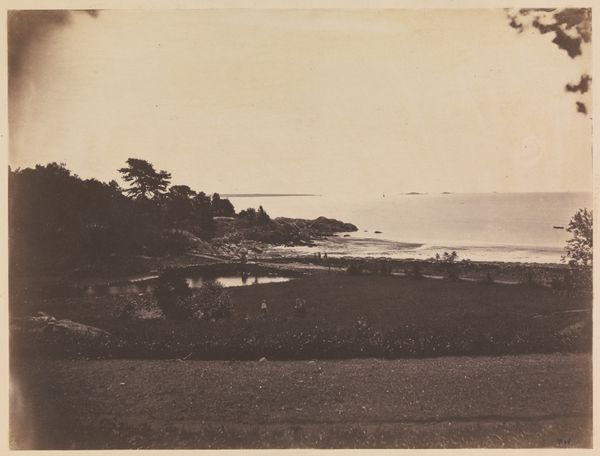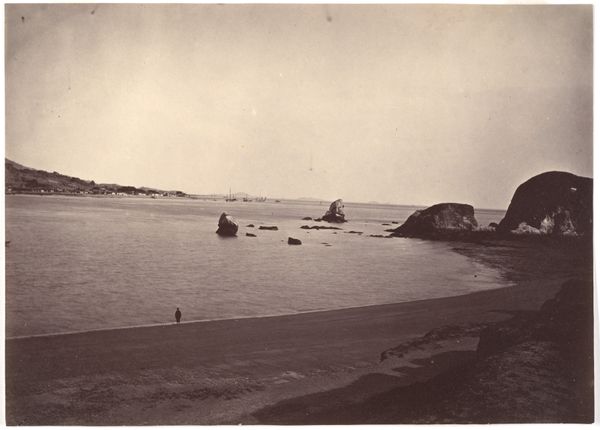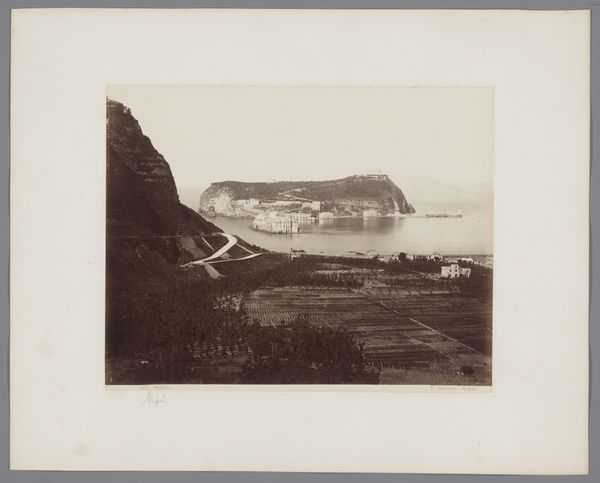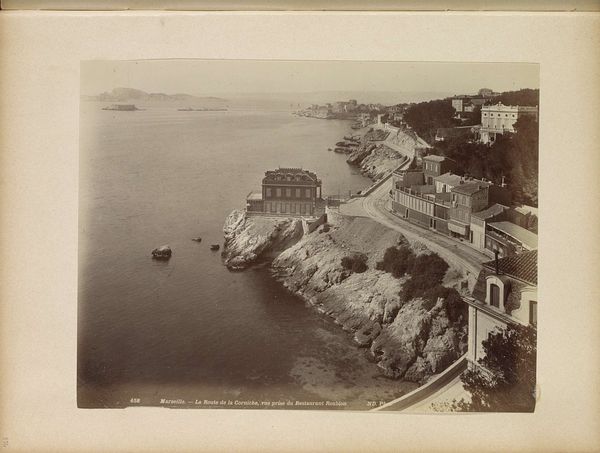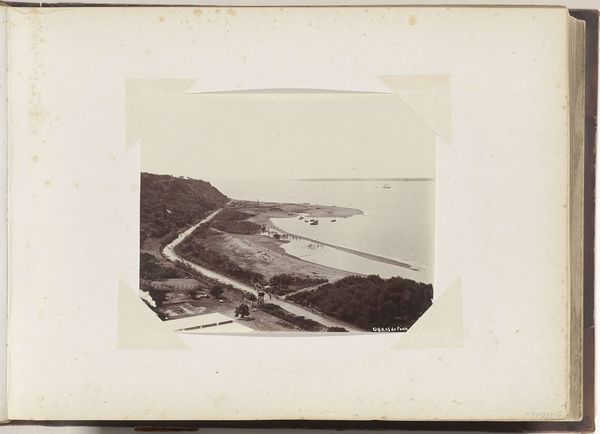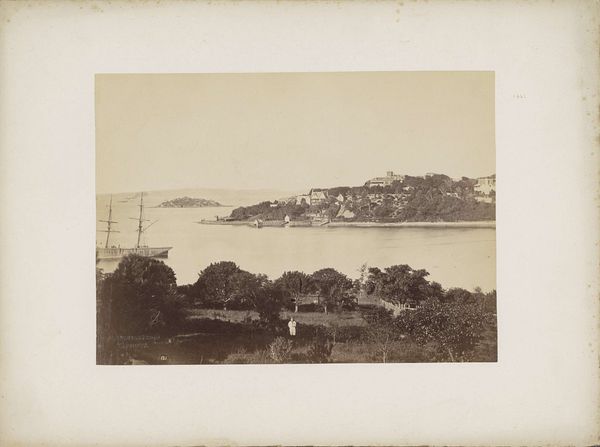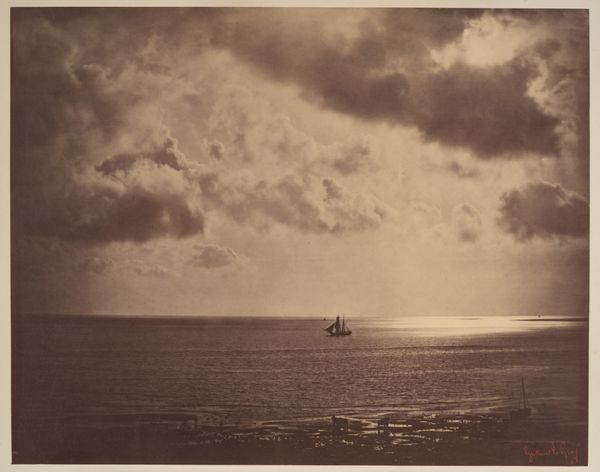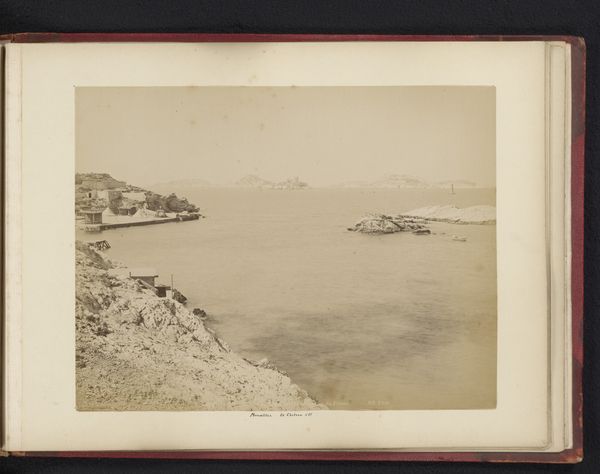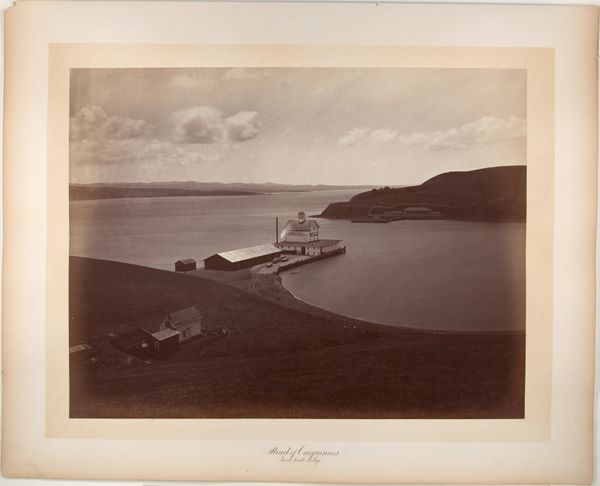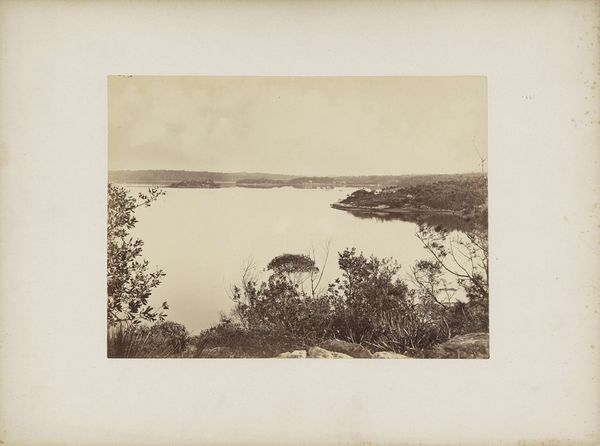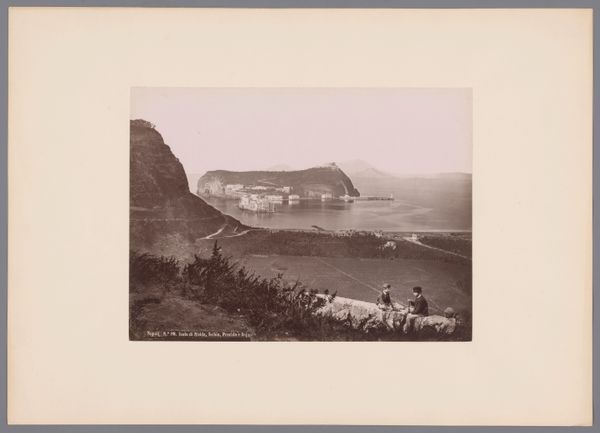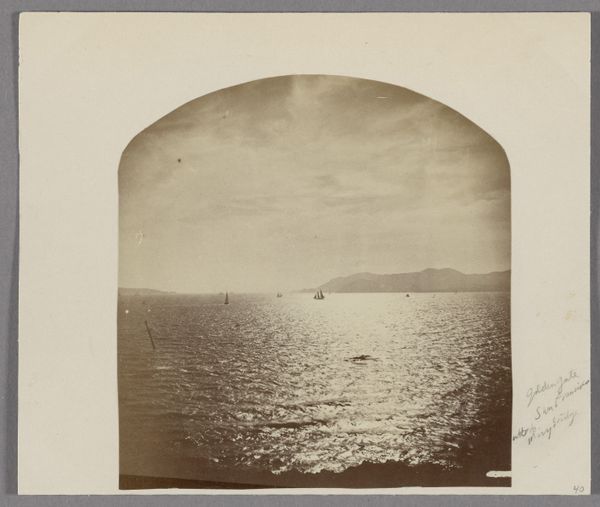
Dimensions: image: 13.7 x 23.5 cm (5 3/8 x 9 1/4 in.) sheet: 18 x 26.5 cm (7 1/16 x 10 7/16 in.) mount: 25 x 33.2 cm (9 13/16 x 13 1/16 in.)
Copyright: National Gallery of Art: CC0 1.0
Editor: This gelatin silver print, titled "Acajutla" and created in 1877 by Eadweard Muybridge, has a really melancholic feel to it. The tones are muted, almost sepia, and that long exposure makes the water look like mist. What aspects of this image stand out to you? Curator: This image reflects the complex socio-political forces at play in 19th-century photography. Muybridge was commissioned to document the landscape, but his images also served as visual tools for promoting expansionist agendas. Do you see how the industrial architecture on the coastline and the ships at sea convey a sense of progress and control over the environment? Editor: I do. It's almost like the architecture and ships are being presented as proof of successful trade and control, a representation of industrial advancements in the area. But I am left wondering about who is *not* being shown in the frame. Curator: Exactly. Think about whose perspectives are excluded. The indigenous communities, the local laborers – they are conspicuously absent, reinforcing a colonial narrative of dominance. How does this image function within the larger visual culture of its time? Editor: I guess it normalizes the expansion and exploitation as something picturesque and almost inevitable. Were images like these instrumental in shaping public perception and justifying such endeavors? Curator: Absolutely. The pictorial style, while seemingly artistic, further romanticizes the scene, obscuring the potential human cost behind this apparent progress. Photography was emerging as a potent instrument of power, shaping perceptions and reinforcing existing power structures. Editor: So, it’s not just a landscape, but also a political statement, whether consciously or not? Curator: Precisely. This makes you consider not just what is depicted, but what isn’t. Considering that is key to interpreting these images within the historical and social landscape of the time. Editor: I never thought about landscape photography in such political terms. It's a fascinating, but slightly unsettling, revelation. Curator: And that unsettling feeling is a vital step in deconstructing the politics embedded within seemingly neutral imagery. We've learned to see it as more than a serene vista.
Comments
No comments
Be the first to comment and join the conversation on the ultimate creative platform.
